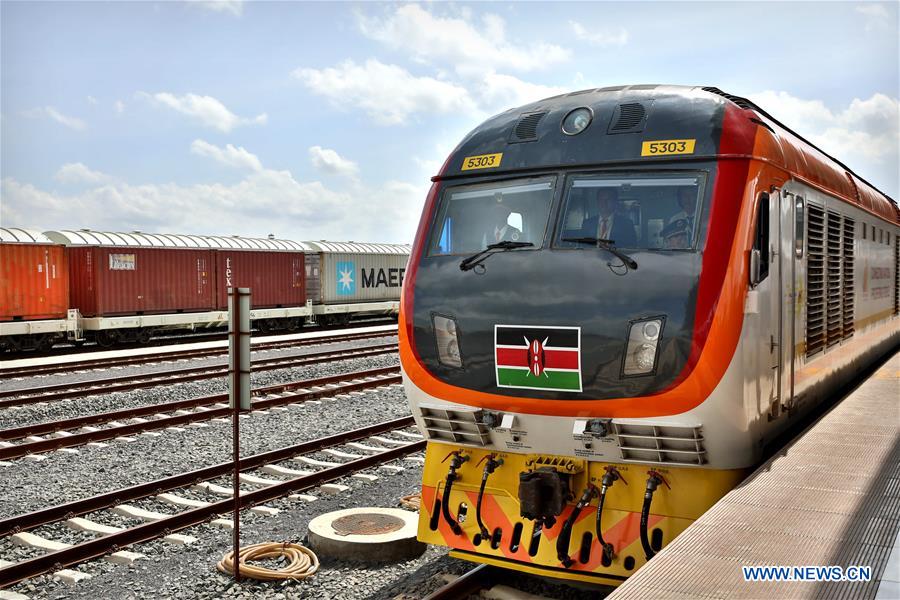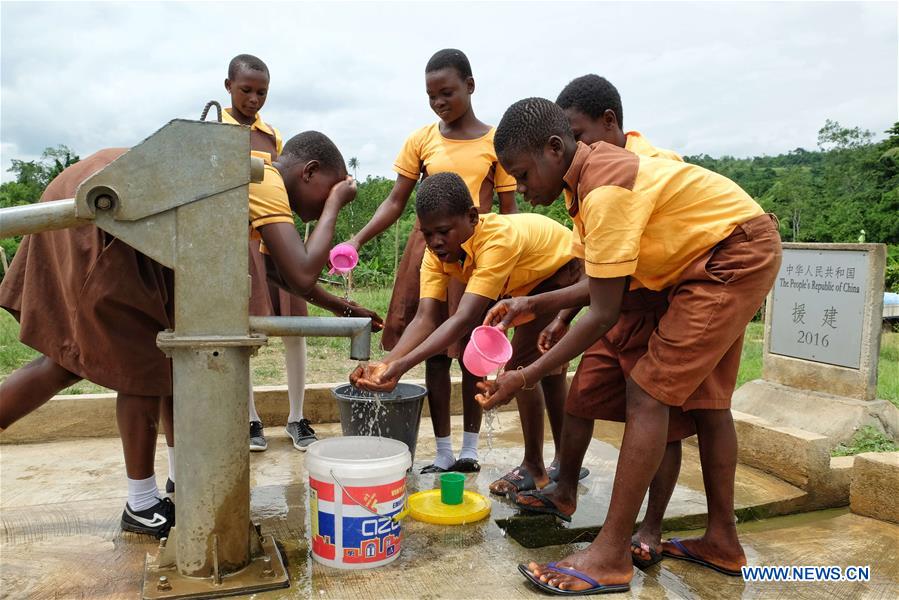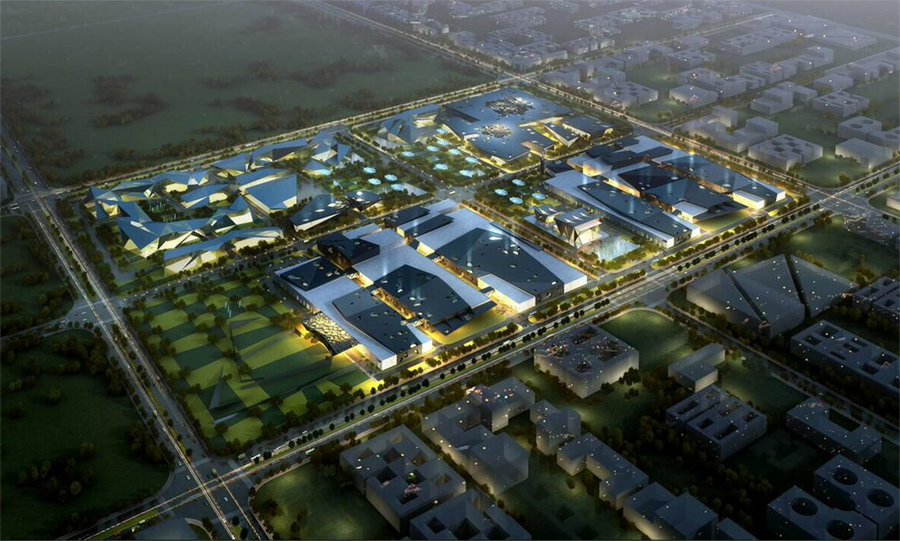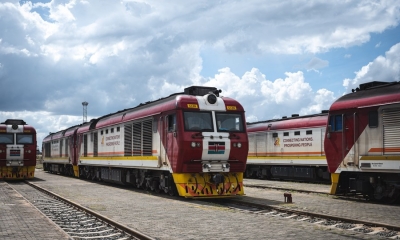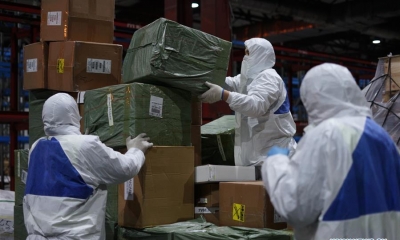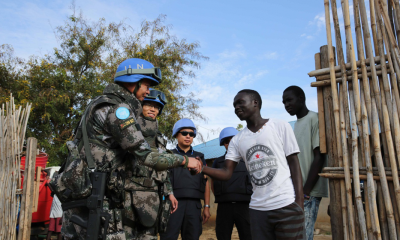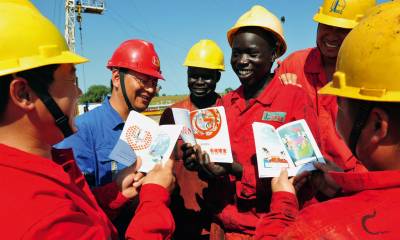Africa Takes a Leap Forward: “the Belt and Road” and Africa’s Development

The first FOCAC was held in Beijing in 2006. Twelve years later, leaders from China and African countries are once again gathering together in Beijing to discuss China-Africa cooperation in a new era.
Wang Yi, the State Councilor and Foreign Minister of China, attended the Meeting of BRICS Ministers of Foreign Affairs in South Africa on June 4, 2018. Questioned by journalists about the upcoming Forum on China-Africa Cooperation (FOCAC) Beijing Summit to be held in September, he noted that as agreed by both the Chinese and the African sides, China will host the FOCAC Beijing Summit this September which is themed with “win-win cooperation and join hands to build a closer community with a shared future for China and Africa”. Both sides will endeavor to combine the theme of the Summit with the joint construction of the “Belt and Road” between China and Africa, the 2030 Agenda for Sustainable Development of the United Nations, the Agenda 2063 of the African Union as well as the development strategies of various African countries to make new planning for win-win cooperation and open up new prospects for common development.
The first FOCAC was held in Beijing in 2006. Twelve years later, leaders from China and African countries are once again gathering together in Beijing to discuss China-Africa cooperation in a new era.
This summit is the first significant multilateral gathering of heads of states to be held in Beijing since the 19th National Congress of CPC. It shows the high value that China places on China-Africa ties, and it will drive the China-Africa relationship to historic new heights.
Δ A train leaves the Nairobi terminus of Mombasa-Nairobi Standard Gauge Railway in Nairobi, Kenya, on May 31, 2018. [Photo/Xinhua]
African Countries Proactive in the Belt and Road Initiative
Since China’s government proposed the Belt and Road Initiative five years ago, more than 100 countries and international organizations around the world have signed up to it, of which more than 80 countries have signed cooperation agreements with China involving Belt and Road initiatives.
Africa is a continent rich in resources, with great market potential. It is in dire need of robust infrastructure. It is proactively participating in the Belt and Road with other countries along the route, anticipating that its economy can take a great leap forward from pre-industrialization to comprehensive-industrialization.
As China’s Foreign Minister, Wang Yi, said in 2018 when he visited Africa for the first time, Africa must be at the heart of the Belt and Road. It must not be left behind by development in China or the wider world.
In fact, FOCAC was established in October 2000, 13 years prior to the Belt and Road proposal. The five principles of cooperation in development applied by FOCAC are common, intensive, safe, open, and green and sustainable. These dovetail neatly with the Five Development Concepts promoted by the Belt and Road Initiative, which are innovative, coordinated, green, open and inclusive development. Nearly 18 years of effort have made FOCAC a successful icon of national cooperation, enabling it to provide precious experience for the Belt and Road in different regions and fields.
Δ Children fetch water from a borehole in Guayotse Village, Eastern Region, Ghana, on June 18, 2018. The government of China is providing 1,000 boreholes
for hundreds of rural communities in six out of the ten regions of Ghana to bring clean water to the people. [Photo/Xinhua]
The Belt and Road Connecting Africa
Backward infrastructure is a bottleneck that constrains Africa’s economic development. Poor transport facilities and inferior roads have created exorbitant cost in domestic and regional trade among African countries, and impeded foreign investment.
Financing for Africa’s infrastructure needs faces an annual shortfall of at least 20 billion USD. This can be met by China’s “going global strategy” and world-leading strength in infrastructure construction. In addition, most African countries have low industrialization, and the contribution of their industry to their economy is rather small too. However, Africa is a continent with abundant resources, a low labor cost, and great market potential, while China has capital for development, suitable technology and equipment, as well as a wealth of experience in growing from an agricultural country to the “world factory”. At a time when China is undergoing fundamental economic transition and upgrading, there is plenty of high-quality capacity and advanced equipment and technology available for outward transfer, much of which is ideally suited to Africa’s needs.
Just as Chinese people harbor “the Chinese Dream” of national rejuvenation, African people hold the African dream of achieving development and alleviating poverty. Connectivity and industrialization are essential preconditions, and the only path to realize the African Dream. The Belt and Road Initiative can work in harmony with Africa’s development strategy for the 21st century – it can provide new drive for the sustainable development of China-Africa relations and help Africa take a leap forward; it can also blaze a new trial for south-south cooperation.
China and the AU signed an MOU on infrastructure construction cooperation on January 27, 2015. According to the MOU, under the strategic framework of the Africa 2063 Agenda, China will enhance cooperation with African countries on railways, highways, regional airlines and industrialization, to promote African integration. Chinese enterprises have already launched construction projects including railways, airports, industrial parks and ports in countries like Ethiopia, Djibouti, Kenya and Nigeria.
Δ The Mbale industrial park, now under construction in eastern Uganda, will host over 50 companies, creating 15,000 jobs when completed.
For example, Dongguan Huajian Group, the first Chinese shoe production giant in the Ethiopia Oriental Industrial Park, started business there at the end of 2011. By the end of 2017, Huajian (Ethiopia) had become China’s largest private enterprise in Ethiopia, creating USD 122 million of foreign exchange income and adding 7,500 new jobs for local people. The largest Shoe export company in Ethiopia, the company produces over 5 million women’s shoes each year, accounting for more than 65% of the Ethiopia shoe industry’s exports. On September 1 2017, the Ethiopian government awarded Mr. Zhang Huarong, chairman of Huajian Group, the honorary title of “Father of Ethiopia’s industry” to thank him for his contribution to the country’s industrial development. Having created a legend in Ethiopia, Huajian Group plans to invest in Rwanda, Nigeria and other African countries in the future, to continue to align the Belt and Road with Africa’s industrialization.
China-Africa Industrial Cooperation Drives Africa Forward
The ultra-intensive “Ten China-Africa Cooperation Plans”, worth about 60 billion USD, include cooperation in industrialization, agricultural modernization, infrastructure construction, finance, green development, trade and investment facilitation, poverty alleviation, public health, people to people exchanges, and peace and security. The foremost project is cooperation on industrialization – to promote the progress of African industrialization through China-Africa cooperation. To make this happen the first “China-Africa Capacity Cooperation Fund” – worth 10 billion USD – has been set up, alongside 5 billion USD each to a special loan for medium and small-scale African enterprises, and to a China-Africa Development Fund.
China-Africa industrial cooperation has already borne fruit. As one of the first group of African countries to join China in international industrialization cooperation, Tanzania signed a framework agreement with China’s National Development and Reform Commission to support the core of the country’s 5-year-plan.
Infrastructure construction and the building of industrial parks are also making rapid progress. China has helped Africa set up several railways, including one connecting the port city Mombasa of Kenya to its capital Nairobi, one connecting the capital of Ethiopia, Addis Ababa, to Djibouti, and one connecting Angola and Nigeria.
As Uhuru Kenyatta, the president of Kenya, said at the opening ceremony of the railway from Mombasa to Nairobi on May 31, 2017, the railway is “the laying of one of the key cornerstones to Kenya’s journey of transformation to an industrial, prosperous and middle income country”.
He Wenping, senior researcher of The Charhar Institute, researcher of Institute of West-Asian and African Studies, Chinese Academy of Social Sciences
Editor: Cai Hairuo
Opinion articles reflect the views of their authors, not necessarily those of China Focus
 Facebook
Facebook
 Twitter
Twitter
 Linkedin
Linkedin
 Google +
Google +
